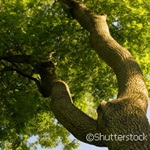
Ash trees have been suffering from the Chalara fraxinea fungus (otherwise known as ash dieback) across Europe: not only in mature forest areas, but also in urban areas such as parks and gardens, as well as in nurseries. It was discovered that in February of this year, a consignment of infected trees was sent from a nursery in the Netherlands to a nursery in Buckinghamshire, England. However, a recent Swedish study published in the Scandinavian Journal of Forest Research has revealed information that is of crucial importance for horticulturalists in the United Kingdom, and in northern and central Europe, in their battles against the aggressive attacks of the fungus. The results from the study are far-reaching, encouraging governments to invest in ash breeding programmes that will all but eliminate the disease.
According to the researchers, the vitality of European common ash has rapidly deteriorated in northern, eastern and central Europe in recent years. Dieback was first observed in Lithuania and eastern Poland in the mid1990s. Since then, severe damage has been reported in many European countries including the Austria, Belgium, the Czech Republic, Denmark, Finland, France, Hungary, Germany, Latvia, Norway and Slovenia. In Sweden, where the researchers are based, localised instances of the disease were first observed in the southernmost regions in 2002, and it subsequently spread across almost the entire Swedish ash population. More recently, in October this year, a ban on British imports of ash trees came into force, and dieback is being treated as a quarantine pest under national emergency measures.
The study analysed ash dieback damage on 16-to-22-year-old trees in Swedish orchards; their findings indicate that the disease is strongly genotypically controlled, meaning that it attacks ash trees that display the same or similar genetic properties. Furthermore, they discovered that there was scope for introducing breeding programmes to produce ash trees with greater resistance to infection.
The main symptoms of ash dieback are severe dieback of the crown, wilting and necrosis of the leaves, and necroses on the bark of shoots and stems. Lesions formed around lateral twigs and leaf scars indicate possible points of infection.
The study concludes that ‘the drastic effects of the dieback disease in countries such as Lithuania, where the forested area of ash fell from 53,000 ha to 38,000 ha between 2001 and 2009, is alarming, and suggests that appropriate measures should be taken as soon as possible’. If action is not taken swiftly, other countries could witness the same level of deforestation that Lithuania has suffered.
One conclusion that can be drawn from this research is that there is an answer to the ash dieback problem. Through stringent breeding programmes of stronger clones, ash trees with greater resistance to the disease can grow, meaning a reduced risk of a Chalara fraxinea fungus outbreak. For now, governments must deal with this problem, but a sustainable plan for the future must be implemented imminently.
Source: Envirocentre.ie – Promising New Research in the Fight Against Ash Dieback




